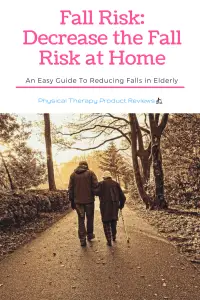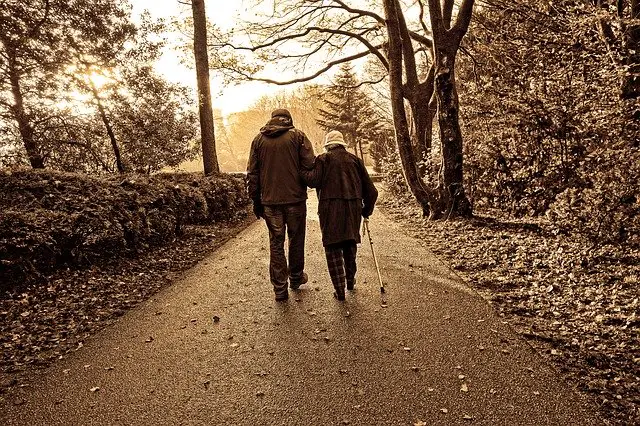Reducing the Fall Risk
 Every eleven seconds, an older adult is treated in the emergency room for a fall (CDC). These falls can lead to serious injuries, including bone fractures, cuts and bruises, muscle strains or tears, and even brain injuries. Falls can also be fatal in certain circumstances. Even if one is lucky enough to sustain a fall without injury, they can gain an increased fear of falling. Limiting their social activities and engagement, and may even lead to social isolation and depression (NCOA).
Every eleven seconds, an older adult is treated in the emergency room for a fall (CDC). These falls can lead to serious injuries, including bone fractures, cuts and bruises, muscle strains or tears, and even brain injuries. Falls can also be fatal in certain circumstances. Even if one is lucky enough to sustain a fall without injury, they can gain an increased fear of falling. Limiting their social activities and engagement, and may even lead to social isolation and depression (NCOA).
The good news is that falls can be prevented by some simple changes. By making a few alterations to your home and your mindset you can decrease your risk of falls, and possibly improve your confidence with your mobility.
Clear The Clutter
One easy way to prevent falls is by keeping your home tidy. Removing the stacks of newspapers, piles of shoes, and putting the laundry away is a great place to start. Also, think about the throw rugs, uneven wood flooring, and electronic wires around your home. By changing these little things you can be a great help when it comes to tripping hazards. Most falls start by simply catching a toe on something that couldn’t have easily been picked up or moved.
Home Modifications to Decrease Falls
The stairs, bathroom, and hallways are areas in the house that present a high risk of falls. Some quick modifications can decrease this fall risk. First, adding handrails in the bathroom and the stairway is a quick change that can help with decreasing falls. Second, non-slip surfaces serve as a great benefit in the shower, decreasing the risk of slipping on wet tile. Lastly, changing your lighting. Vision plays a big role in balance, and if you don’t have adequate lighting your balance is not going to be at its best. Start by installing some brighter light bulbs, particularly in stairways and hallways, and use night lights in your home.
Avoid Tripping on your Clothes
The clothing you wear can actually increase your risk of falling. Staying away from baggy clothes that may trip you. Instead, opt for better fitting, hemmed clothing that doesn’t bunch or drag can be a huge help. Also, think about your choice of footwear. Flip flops, clogs, and wearing just socks around the home can increase your chance of tripping. Try switching to well-fitting shoes or non-slip socks. Some of the best shoes to prevent falls are also the most comfortable to wear such as these non-slip Crocs.
Self Care
Taking care of yourself can be helpful in decreasing your risk for trips and falls. First, get your vision checked. As stated earlier, vision plays a big part in your balance. So check in with your eye doctor, and make sure you’re seeing clearly and updating your glasses as needed. Second, review your medications with your doctor. Some medications might make you dizzy or sleepy, increasing your fall risk. Third, do what you can to work on your strength and balance. Seek out assistance from a Physical Therapist or Health Care Professional to see what exercises would be beneficial. Lastly, ask your doctor if an assistive device would be helpful. A cane or walker may give you a little more stability for your daily tasks and give you more confidence with your balance.
Fall prevention means injury prevention for the elderly community. So take the time to evaluate your environment and see if some of these small modifications can help you avoid a future fall.
Written by: Kelsey Downing, PT, DPT
Kelsey Downing earned her Doctor of Physical Therapy (DPT) degree in 2016 from Campbell University in Buies Creek, NC. Since then, she has been working in a variety of settings. From outpatient, acute care, and home health she has gained a wealth of hands-on knowledge. Additionally, she has sought out further certification in manual therapy, concussion management, and lymphedema management. She continues to be driven to learn and refine her skills to improve patient care. Pt is a frequent contributor to physicaltherapyproductreviews.com.
Works Referenced:
“6 Steps for Preventing Falls in the Elderly.” NCOA, 8 Aug. 2017, www.ncoa.org/healthy-aging/falls-prevention/preventing-falls-tips-for-older-adults-and-caregivers/6-steps-to-protect-your-older-loved-one-from-a-fall/.
“Fall Prevention: Simple Tips to Prevent Falls.” Mayo Clinic, Mayo Foundation for Medical Education and Research, 4 Oct. 2019, www.mayoclinic.org/healthy-lifestyle/healthy-aging/in-depth/fall-prevention/art-20047358.
“Important Facts about Falls.” Centers for Disease Control and Prevention, Centers for Disease Control and Prevention, 10 Feb. 2017, www.cdc.gov/homeandrecreationalsafety/falls/adultfalls.html.
Disclaimer: The information provided in this post is for educational purposes only. This is not a substitute for a medical appointment. Please refer to your physician before starting any exercise program.



